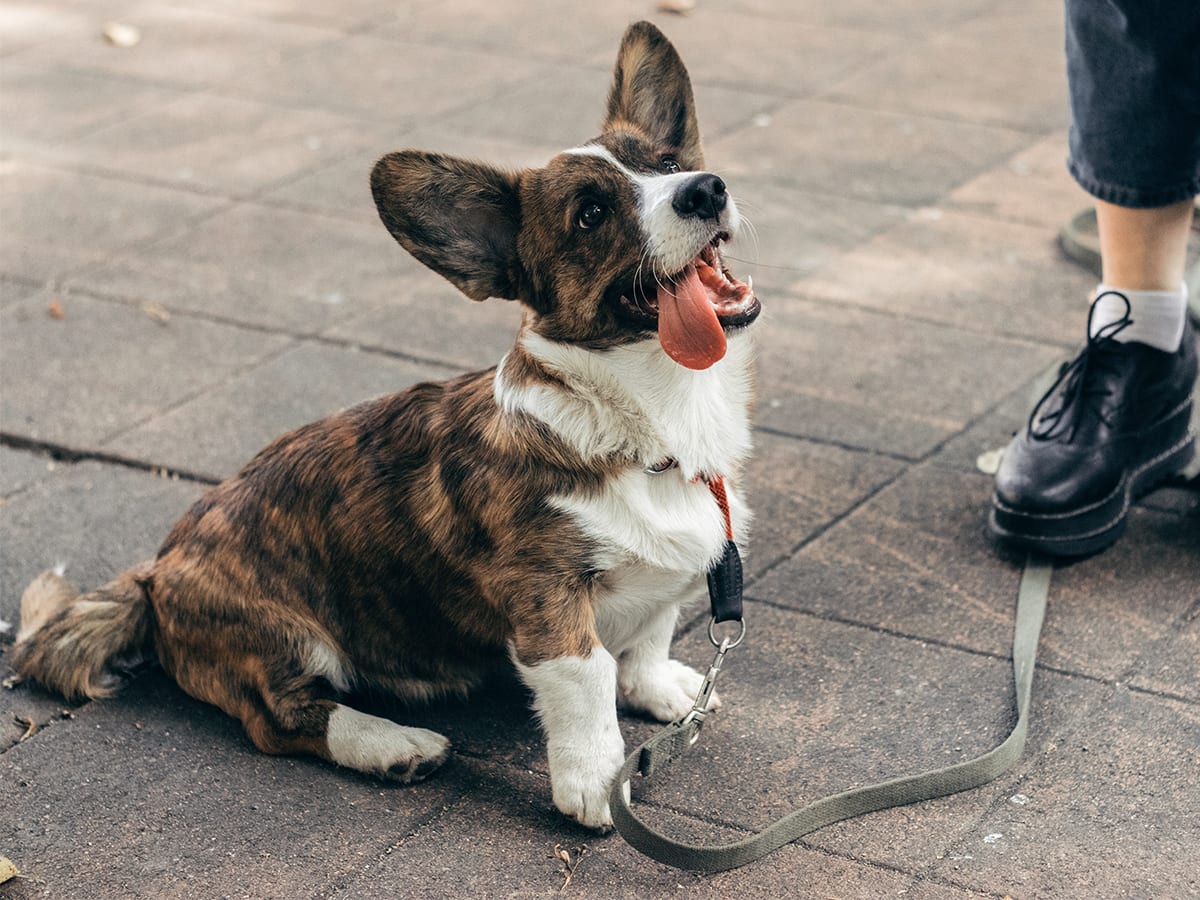On top of being a great way to bond, walking your pup gives them exercise, engagement and the opportunity for socialisation. As always, safety should be the top priority. To ensure it’s a positive experience each time those paws hit the pavement, consider the following tips to keep your dog safe when out walking:
Know your dog
All dogs have different requirements. Puppies, some smaller breeds, senior dogs and dogs with health conditions, may only be able to tolerate very short walks. If your dog stops, sits or shows signs of fatigue during a walk, they have most likely had enough. Don’t forget that puppies still having their vaccinations may not be ‘walk-ready’, so ensure that they have completed their quarantine period first and always follow your vet’s advice when it comes to getting the greenlight to walk your puppy on the ground outside. If your vet has not advised that your pet is safe to walk on the ground, consider carrying them around during the socialisation period of 9-12 weeks to get them used to the sights and sounds of other people, cars and daily life.
Use the right leash
When it comes to leashes, there isn’t a one size fits all. However, the leash should be 1-2m in length and sturdy. If you are training your dog, a shorter leash may be better initially to keep them close and safe. For long walks, a leash that you can wrap around your wrist can be more secure and to stop your hands from getting tired. Retractable leashes may be suitable for quick toilet breaks, but they are less sturdy and can be unsafe when in crowded areas, as your dog can get further away from you too easily, so we don’t generally support their use. You may need to test out a couple of leashes before you find the right one.
Pro tip: attach your poo bags in a little pouch to your leash, that way you’ll never leave them at home and be stuck in a bad situation!

Choosing when to walk your dog
Taking walks in off-peak periods can make walkies easier as you’re less likely to encounter distractions. However, remember the darker hours will mean poorer visibility. Other pedestrians and traffic won’t see you and your pup as easily. Clip-on leash lights and/or high-vis vests are a great idea to keep you both visible and safe.
Hydration station
That is you! Even if you’re going on a short walk (and regardless of the weather), always bring a water supply. A good rule of paw is to offer your dog water whenever you’re thirsty. Collapsible bowls and doggy water bottles are easy to bring along to keep your dog hydrated. When it comes to food, dogs are like us and need it as a source of energy – a good diet is essential for exercise and healthy movement, so be sure to feed your dog quality ingredients to keep them feeling full and energised.
Protect your dog against the elements
Dogs with light fur or exposed skin can be susceptible to sunburn. Use dog sunscreen (never human sunscreen) and other sun protection gear including sun shirts, vests, dog visors and doggy goggles. On particularly hot days, test the temperature of the ground, including concrete and sand, by placing your hand on it. If you can’t keep it there for more than ten seconds, it’s not safe for your dog to walk on. In this case. dog booties can help to protect paws from heat and unwanted nasties like splinters, scratches or even outdoor allergies. During wet weather, there’s no need for a raincheck! Doggy raincoats and booties are great for keeping fur warm and dry.
Parasite and toxin protection
Make sure your dog is completely up to date on their parasite prevention, especially if walking in areas with high flea or tick populations. Always search your dog for ticks after exercising, particularly in humid weather, even if they are on preventative medications, checking around their ears, under their tail, between their paws and around their eyes. This is a great habit to get into as it’s better to be safe than sorry!
Spring and Summer are primetime for snakes, particularly red belly black snakes, so if you’re walking in wetlands or bushy areas, definitely keep your eyes peeled and keep your dog close. NEVER let your dog off in national parks, as they bait regularly with 1080 poison for foxes, which is almost 100% lethal if your dog were to ingest it.
Nature safety
Always follow instructions in park areas and be mindful of local wildlife, especially breeding areas and where vulnerable species live. Dogs love to sniff and explore, and we don’t want to disturb any animals.
Lyka: fresh food means more energy
Fresh food gives your dog the energy they need to walk, run and play. Lyka’s recipes contain powerful omega 3s to help your dog’s joints, whist the antioxidants and phytonutrients help to enhance their exploratory senses.








